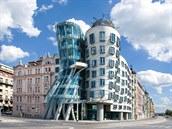
Reinforced concrete was invented 150 years ago by a gardener. The flower pots pissed him off
Making a living in the gardens near the Louvre does not sound like a bad deal. And yet there was something that bothered Joseph Monier: the flower pots he was in charge of kept cracking in the winter.
Monier wondered how to stop it. So he started adding wire mesh to the new pots to better withstand frost. Hit! He successfully introduced his discovery at an exhibition in Paris in 1867. At the same time, he obtained a patent for the production of vessels and tanks made of iron wire and cement for horticultural purposes. The revolution could slowly begin.
The war was slowed down by the war
Why did Monier make the discovery? It has to do with origin. He was born in 1823 into a horticultural family. To a household where every working hand was good. Monier did not go to school, instead he helped in the fields. He proved himself, for which the Duke of Uzes offered him the position of gardener on the estate in Paris at the age of 17.
Photo galleryView photo gallery |
As he completed his evening school education, he learned to read and write. However, the habit of thinking with "common sense" remained.
Monier was not the first to think of reinforcing flowerpots with iron rods. However, more educated colleagues rejected the idea. They believed that steel in combination with concrete would rust and that different thermal properties of materials would lead to rapid degradation and disintegration.
While working in the Tuileries Gardens, Monier could not resist the urge to try. And he succeeded. He soon realized the great potential of his discovery. While the concrete resists pressure, the iron (or steel) reinforcement in it helps to pull.

The combination of these properties created a material that later became the basis of many large buildings. Including the 24-story Grenfell Tower, which burned down in London in June.
Monier's business has flourished for a long time with the discovery. Until about 1870. Napoleon III. declared war on Prussia. However, Paris was besieged by foreign troops for four months. Hungry citizens invaded Monier's lands and took away anything that could be eaten. A year later, the Prussian shelling destroyed all that was left. It's time to start again.
In prominent services
The war troubles did not set the reinforced concrete pioneer. He successfully revived his business, his garden tanks became a hit. In addition, he knew how to take care of his clients: after years, he contacted them, checked whether the buildings were in use. In 1875 he built the first reinforced concrete bridge near Chazelet Castle. His reputation spread rapidly, celebrities spoke to him.
MAGAZINE Weekend TODAY
30 wonders of Europe. The summer series begins with competitions. You can find more in the magazine Víkend DNES on Saturday, July 1. Win a week in the Alps!
However, tragedy has ruined his contented life again. The older son quarreled with him and left him, the younger one died when he fell off a scaffolding while inspecting a building in Nice. With no descendants to help him, Monier's company went bankrupt.
The bearded Frenchman tried to start a moribund business, but was attacked by the tax authorities, who thought he was receiving large commissions from foreign patents.
Monier got into such a crisis that the foreign companies that used his patents wished for him; they even appealed to the French president to retire him. Monier died at age 82. Who knows what the tallest buildings in the world would look like today if the damn flower pots didn't bother him then.
Selected reinforced concrete structures
MAXXI, Rome (2010) The Italian National Museum was designed by Zaha Hadid. It is characterized by long undulating walls, which are used for exhibiting on both sides: inside and out.
Burj Khalifa, Dubai (2010) At 828 meters, it is the tallest building in the world. With Google Street View, you can see the interiors from above and experience the view from above.
Dancing House, Prague (1996) One of the architects, Vlado Milunič, wanted the building to lean over a crossroads - this was supposed to mean setting Czech society in motion after totalitarian times.







